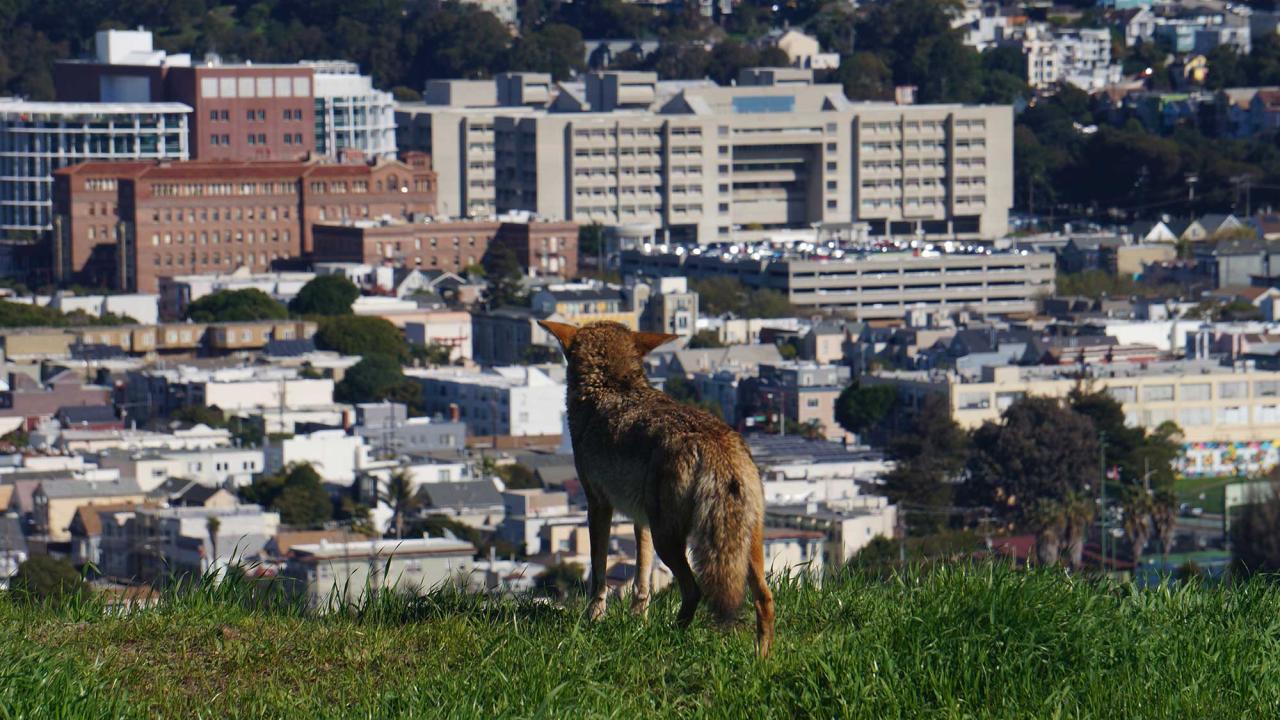Living with wildlife is just something we do, whether we’re waiting for turkeys to cross the road at UC Davis or watching a coyote trot across a field at dawn.
But as people and the built world expand into natural habitats, wild and domestic animals — including humans — are increasingly sharing the same spaces, with mixed results. Interactions with large carnivores tend to conjure the strongest feelings, from awe and wonder to fear and anxiety.
To explore how we can better coexist with our wild neighbors, we spoke with three UC Davis wildlife researchers studying coyotes, black bears and mountain lions in California. While each species is unique, people can employ common practices to coexist peaceably with local wildlife.
Risk in perspective
First, let’s put risk in perspective:
In the past 45 years in North America, two people have died from a coyote attack, compared to more than 40 deaths every year from domestic dog bites in the U.S., according to the Centers for Disease Control.
Since 1986, there have been 25 mountain lion attacks on people in California, four of which have been fatal, according to the California Department of Fish and Wildlife. In contrast, vehicles kill around 4,000 people a year in the state.
And black bears? “You’re more likely to be killed by a bee than by a black bear,” said Dan Ruka, a UC Davis master’s student in the Graduate Group in Ecology who is studying the impacts of wildfire on black bears in Lassen National Park. “The chances of being injured by a bear are approximately one in 2.1 million.”
So while conflict does happen, it is rare, and there are ways to avoid it.
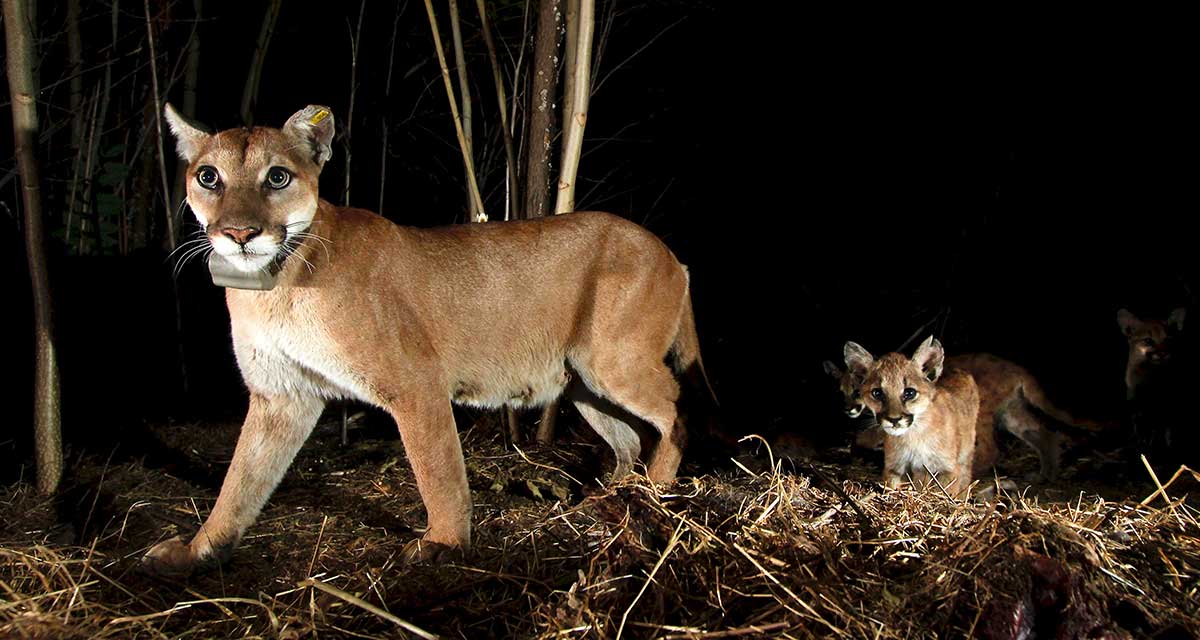
the day and closer to sunrise, perhaps because they are constrained by avoiding male mountain
lions and not able to respond as strongly to recreation. © National Park Service
Mountain lions shift to coexist
Mountain lion researcher Ellie Bolas said the Santa Monica Mountains in southern California provide a blueprint for coexistence. There, mountain lions share space with 18 million people in the greater Los Angeles area, most of the time without incident. In fact, her recent study showed that mountain lions in the region are not only coexisting with humans, they are also actively shifting their schedules and becoming more nocturnal in places where people more frequently recreate.
“We increasingly don’t have a choice but to coexist,” said Bolas, a Ph.D. candidate in the UC Davis Department of Wildlife, Fish and Conservation Biology. “Mountain lions in the LA area are trapped by the ocean, development and freeways. It’s a real testament to the people of greater LA that they are, by and large, tolerant and supportive of the wildlife. It’s also super impressive on the part of the wildlife that they’ve figured out how to make it work in an area where they encounter people every day.”
That said, people can help reduce the potential for conflict by being aware that dawn and dusk are prime times for mountain lion activity. They can also be extra cautious when driving at night, when mountain lions in populated areas are more likely to be active. People concerned about threats to their pets or livestock should secure them in sturdy, covered shelters at night.
What if you see a mountain lion? Bolas said: “That’s amazing. These animals are highly elusive, so enjoy it!” If you feel threatened, give it space. Don’t run. Make yourself big, and project confidence. Throw things, yell or use bear spray if you are closely approached.
“But mostly, I hope people understand how amazing these creatures are and their importance to us,” she said. “Large carnivores help keep ecosystems healthy by consuming large herbivores like deer, which influences plant diversity. Mountain lions are scared of us and just want to go about their lives finding deer.”
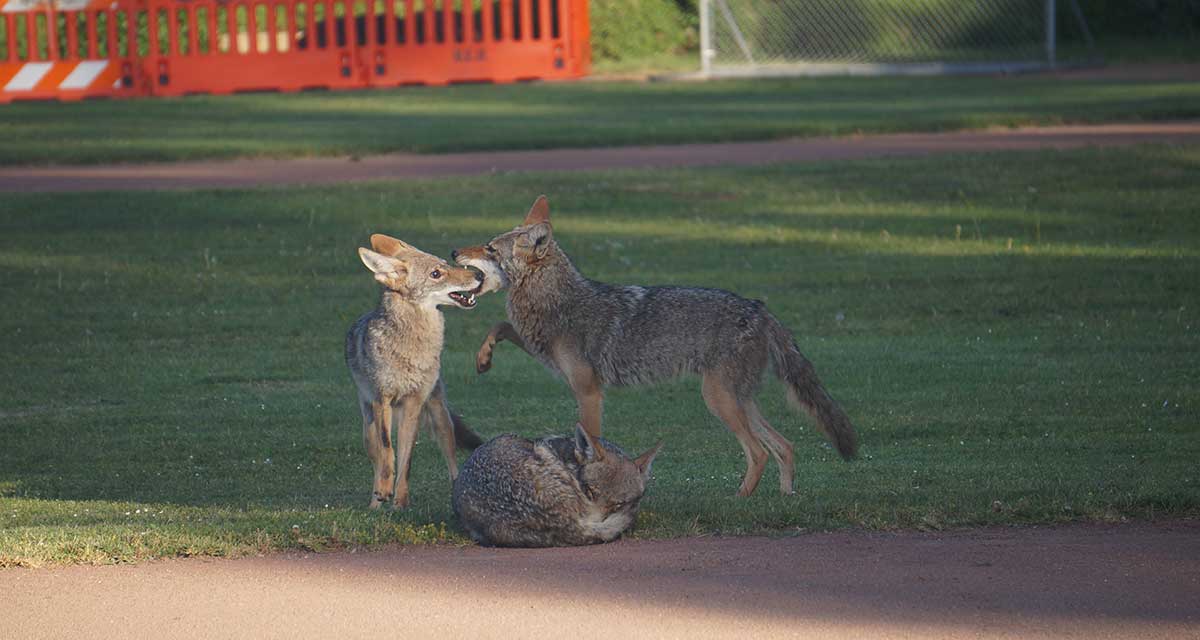
Coyotes in the city
The coyote is a western icon. Highly adaptable, it lives with ease in both rural and urban settings. Some residents delight in their presence, a reminder of the wild still inherent in the city. Others are less hospitable, even using phrases like “evict coyotes” and “coyotes don’t pay taxes,” suggesting this native species somehow doesn’t belong.
“People are afraid by what they don’t know,” said urban ecologist Tali Caspi, a Ph.D. candidate with the UC Davis Department of Environmental Science and Policy and with the UC Davis School of Veterinary Medicine. “There’s a misunderstanding that these animals don’t provide benefits to us, but they do. They control rats and mice, reduce disease, disperse seeds. To me, they’re this incredible, resilient, fascinating species.”
Caspi studies coyotes in San Francisco, where most of the few conflicts that occur there involve pets, especially off-leash dogs. To a coyote, a large dog appears wolf-like, and therefore is deemed a threat, while small dogs may appear much like the gophers they like to eat. The key way to minimize conflicts with coyotes is to obey leash laws and park signage.
“Keeping a dog on leash at all times will keep a dog from chasing a coyote, which I see more than coyotes chasing dogs,” Caspi said.
Caspi’s recent study into the diets of San Francisco’s coyotes showed that pets are rarely on the menu for coyotes. Cats were detected in just 4.5% of scat samples she collected and analyzed. Chicken — such as that found in dumpsters or pet food — was detected in 72% of the samples, followed by natural prey like gophers, raccoons and rats.
Caspi noted ways people can respectfully share space with coyotes: Keep cats indoors, do not leave pet food outside, securely dispose of food waste and, perhaps most importantly, “Don’t feed coyotes.” This emboldens them to approach people, which increases opportunities for conflict.
She also encourages people to learn more about coyotes to better appreciate them — from a distance.
“They are incredible to watch and witness,” Caspi said. “They have extremely complex social lives with intricate relationships. They have biparental care, which is rare for mammals, and they mate for life, which is really cute. Their pups are cute. There’s a lot of social learning going on. They’re playful, and they’re really resilient. We, as a society, have tried so many times to get rid of them, and they’re still here.”
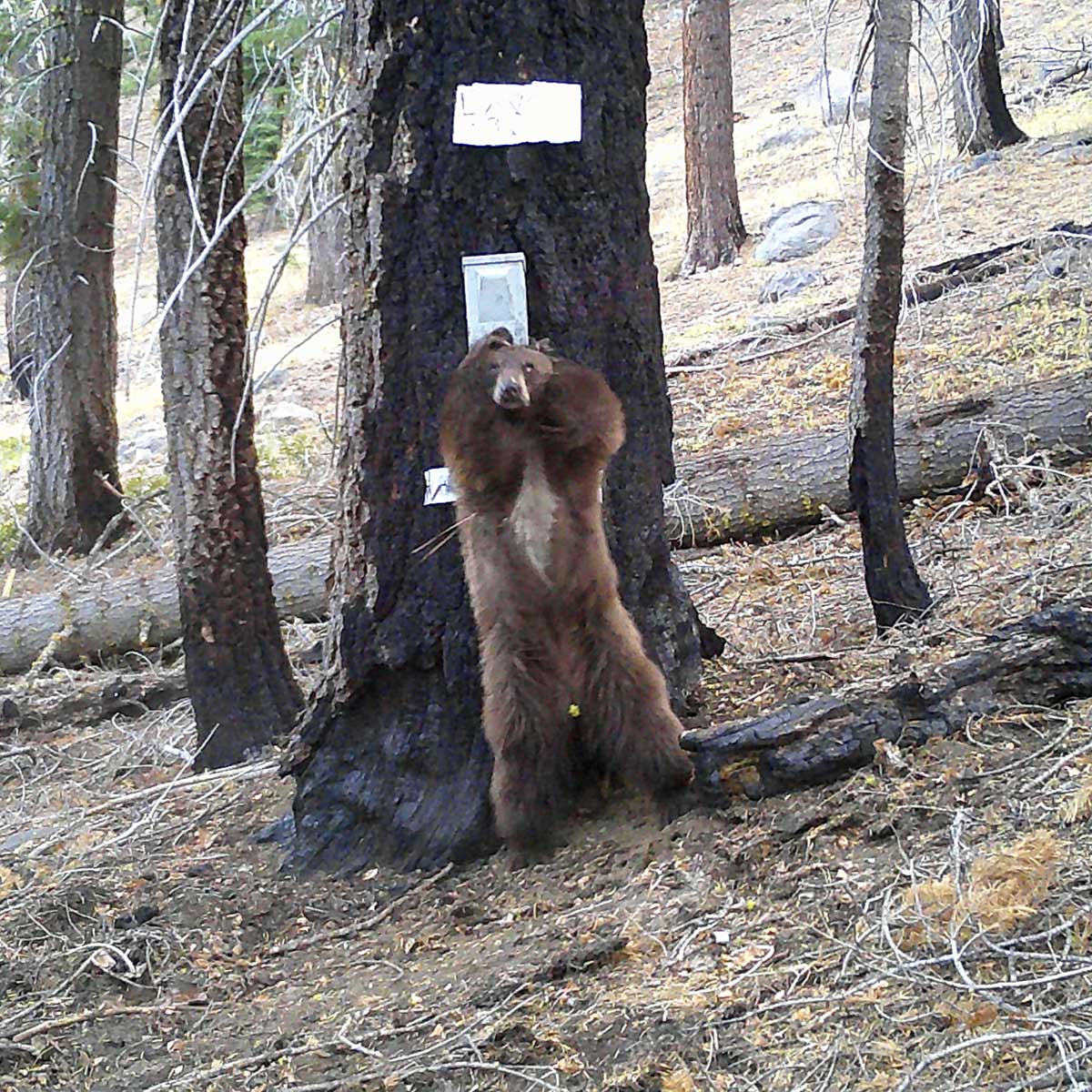
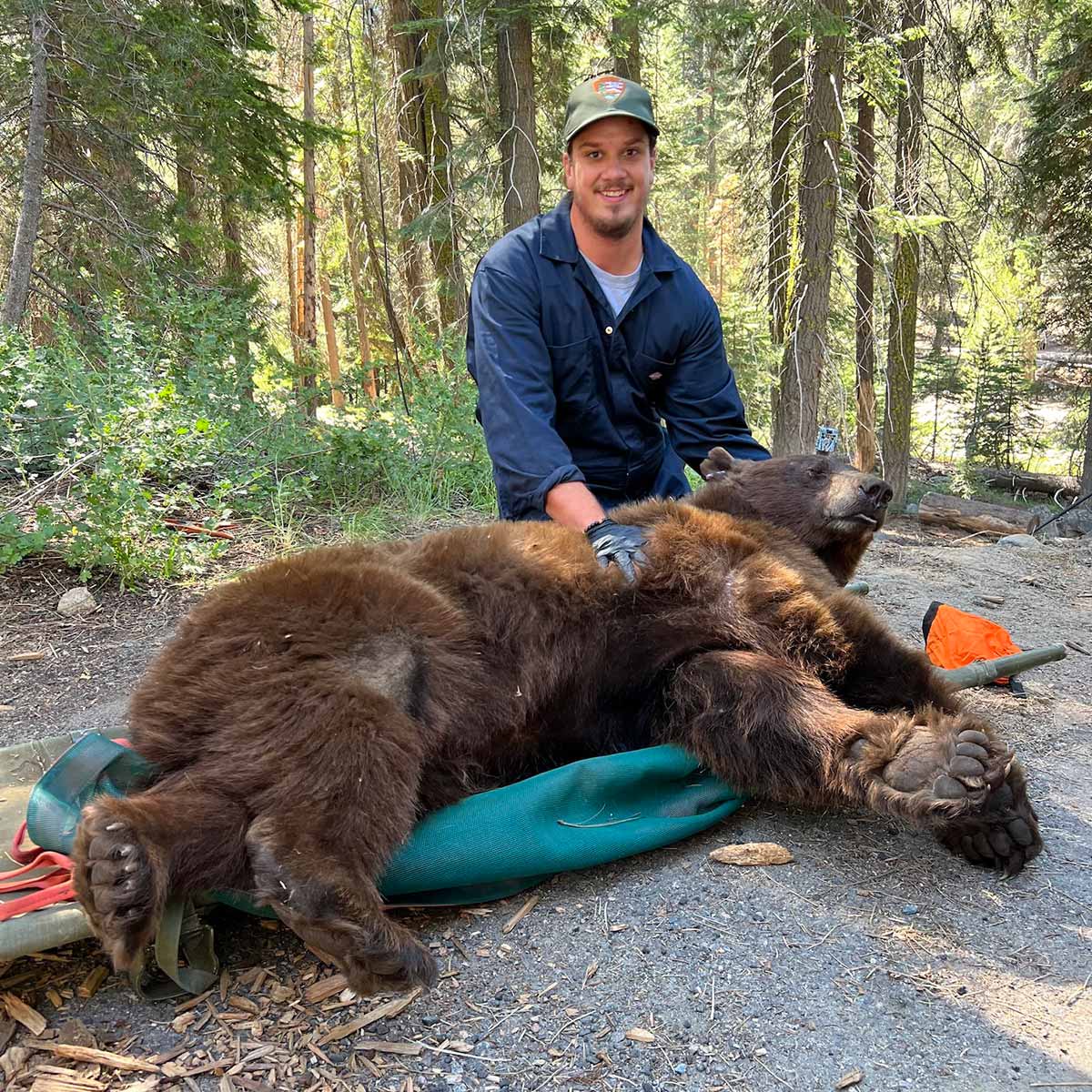
Bear aware
Over the six years that Ruka has been studying black bears, he has been “bluff charged” by a mama bear and encountered several others along the trail while checking camera traps and monitoring the animals.
“Bears have always been my passion,” he said. “To me, they’re the most badass animal out there. They’re a generalist, too. They can live with humans, in mountains, in swamps, and adapt to any situation.”
But sometimes humans have a hard time adapting to them. The most common human-bear conflicts involve food. When camping, anything with a scent should be stored in a locker or bear box. People who live among bears should secure their trash cans, clear their outdoor spaces of food and never feed them.
Ruka noted that black bears are typically timid and will likely run away from you. But they are also very curious and will investigate interesting smells. Once they become food conditioned, they are less afraid of humans and more likely to come into contact — and conflict, with them.
If you do encounter a black bear, Ruka said to give it plenty of space — at least 150 feet, or about the length of four school buses. If it gets too close, stand tall, make yourself big and loudly say, “Hey, bear! Get out of here, bear!”
“Saying ‘bear’ is helpful because it lets others in the area know there’s a bear,” Ruka said. “Yell loudly, as stern as can be, and nine times out of 10 it will run away.”
As humans and wildlife increasingly overlap, the researchers encourage people not to let their fears overwhelm their desire to explore and learn from the natural world.
“These wild places are dwindling,” Ruka said. “Experience as much of it as you can. If you worry about things like this, educate yourself, know the risks and find what you can do to prevent them. Wildlife deserve all our respect, and we should learn to coexist with them.”
